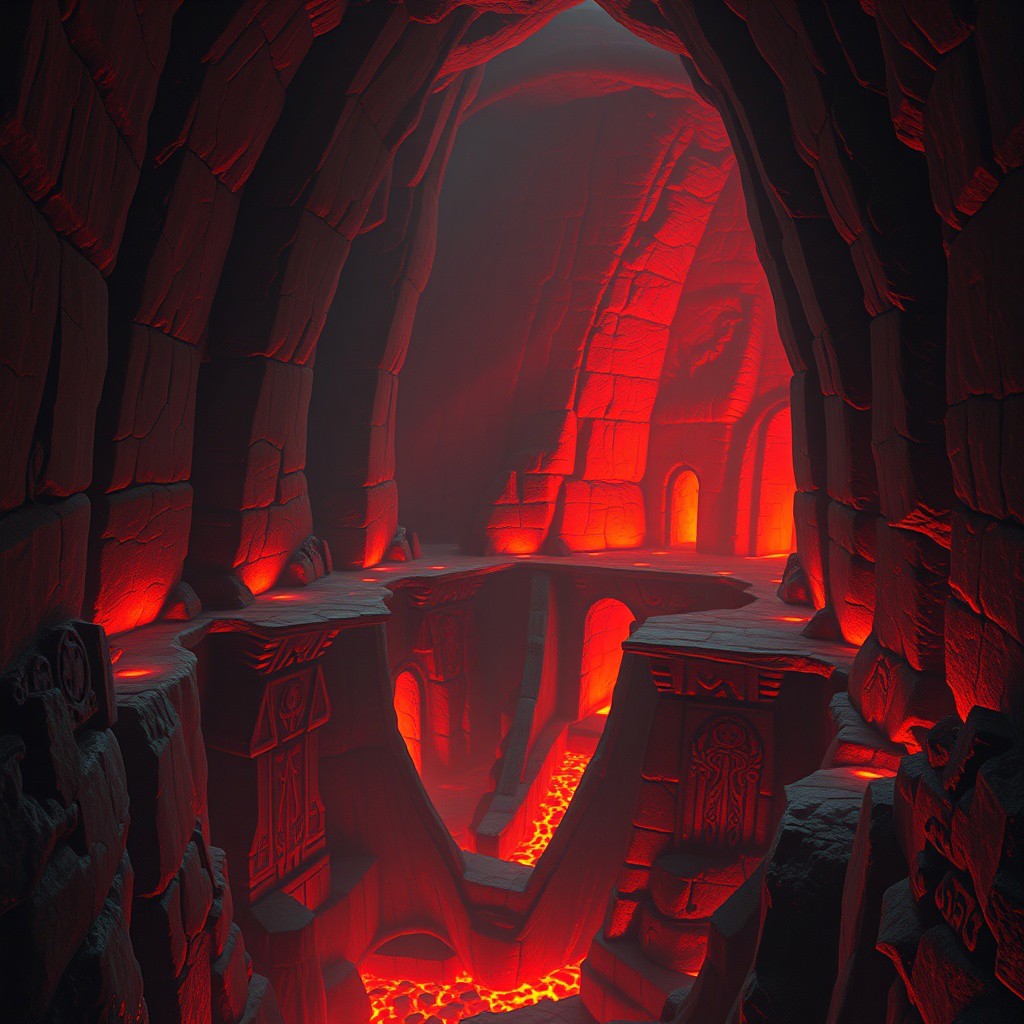A liminal space within the Fire Temple from The Legend of Zelda: Ocarina of Time—a vast, ancient structure buried deep within the earth, where heat distorts the air and time feels like it has melted away. The towering stone walls are cracked and scorched, glowing faintly with an ember-red hue. Fissures in the ground pulse with molten lava, casting flickering shadows that seem to move on their own. The silence is oppressive, broken only by the low, distant rumble of shifting rock and the occasional hiss of steam escaping unseen vents. Stone bridges stretch across vast pits of fire, suspended over an abyss that feels endless. The corridors, lined with intricate but worn-down carvings, spiral into darkness, their paths unclear—almost as if the temple itself is shifting, alive in its slumber. Despite the suffocating heat, the air feels eerily still, untouched by wind or movement. The temple is empty, yet the sensation of being observed lingers, as if something ancient is buried within its depths, waiting. The Fire Temple exists in a space outside of time—a forgotten furnace, still burning, long after its purpose has been lost.
